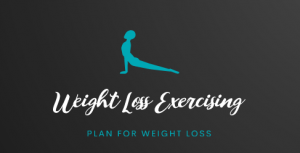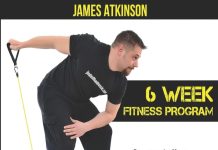Have you ever wondered how to make your body stronger and more resilient? In today’s fast-paced and demanding world, it’s more important than ever to prioritize our health and well-being. This article will provide you with practical tips and strategies to help you enhance your physical strength and resilience. Whether you’re a fitness enthusiast or just starting your wellness journey, these insights will empower you to take control of your body’s strength and build a foundation for a healthier, more resilient you. So let’s dive in and discover how you can optimize your body’s potential for strength and resilience!
Review contents
Building Muscle Strength
Strength Training Exercises
One effective way to build muscle strength is through strength training exercises. These exercises typically involve using resistance, such as weights or resistance bands, to work against your muscles. By performing exercises such as squats, deadlifts, bench presses, and bicep curls, you can target specific muscle groups and stimulate muscle growth. It’s important to start with lighter weights and gradually increase the load as your muscles get stronger.
Proper Form and Technique
When performing strength training exercises, it’s crucial to maintain proper form and technique. This not only ensures that you are targeting the correct muscles but also helps to prevent injuries. Be mindful of your posture, engage your core muscles, and use a full range of motion. If you are unsure about the correct form, consider working with a qualified trainer who can guide you and provide feedback.
Progressive Overload
To continue building muscle strength, it’s important to incorporate progressive overload into your training routine. Progressive overload involves gradually increasing the demands placed on your muscles over time. This can be achieved by adding more weight, increasing the number of repetitions, or reducing the rest time between sets. By challenging your muscles in this way, they will adapt and grow stronger over time.
Importance of Rest and Recovery
Rest and recovery are crucial components of building muscle strength. While exercise is important, it’s during periods of rest that your muscles actually repair and grow. Aim to get at least 48 hours of rest between strength training sessions to allow your muscles to recover fully. Additionally, incorporating activities such as stretching, foam rolling, and gentle cardiovascular exercise on rest days can help promote blood flow and aid in recovery.
Improving Flexibility and Mobility
Dynamic Stretching
Dynamic stretching involves moving through a full range of motion while stretching your muscles. Unlike static stretching, which is done while the body is at rest, dynamic stretching helps to increase blood flow, warm up the muscles, and improve flexibility and mobility. Examples of dynamic stretching include walking lunges, arm circles, and leg swings. Incorporating dynamic stretching into your warm-up routine can help prepare your body for exercise and reduce the risk of injury.
Static Stretching
Static stretching involves holding a stretch for a prolonged period, typically around 15 to 30 seconds. This type of stretching helps to improve flexibility by lengthening and relaxing the muscles. It is best to perform static stretches after your workout or at a separate time when your muscles are already warm. Focus on stretching all major muscle groups, such as your hamstrings, quadriceps, calves, chest, shoulders, and back.
Foam Rolling
Foam rolling, also known as self-myofascial release, is a self-massage technique using a foam roller. By applying pressure to different areas of your body, such as your calves, thighs, and back, you can release tight muscles and trigger points. Foam rolling helps to improve flexibility, increase blood flow, and reduce muscle soreness. Incorporate foam rolling into your pre- and post-workout routine to aid in muscle recovery and improve overall mobility.
Mobility Exercises
In addition to stretching and foam rolling, incorporating mobility exercises into your routine can further improve your flexibility and range of motion. These exercises focus on specific joints and aim to increase stability and mobility in those areas. Examples of mobility exercises include hip circles, shoulder rotations, and ankle mobility drills. Including mobility work in your warm-up or cool-down routine can help enhance your overall flexibility and movement capabilities.
Enhancing Cardiovascular Fitness
Cardiovascular Exercises
Cardiovascular exercises, also known as aerobic exercises, are activities that elevate your heart rate and improve the efficiency of your cardiovascular system. These exercises can include activities such as running, swimming, cycling, brisk walking, or using cardio machines like the elliptical or rowing machine. Aim for at least 150 minutes of moderate-intensity cardiovascular exercise per week or 75 minutes of vigorous-intensity exercise.
High-Intensity Interval Training (HIIT)
HIIT is a form of cardiovascular exercise that involves short bursts of intense exercise followed by periods of active recovery. This type of training has been shown to be an effective way to improve cardiovascular fitness and burn calories. HIIT workouts can be done with various exercises, such as sprinting, biking, or bodyweight exercises. Incorporating HIIT workouts into your routine can help maximize your cardiovascular fitness in a shorter amount of time.
Endurance Training
Endurance training focuses on improving your body’s ability to sustain prolonged exercise. This type of training is often associated with activities like long-distance running, cycling, or swimming. Endurance training increases your aerobic capacity and improves your body’s ability to utilize oxygen efficiently. Gradually increasing your exercise duration and intensity over time will help build your endurance and allow you to perform better during prolonged activities.
Cross-Training
Cross-training involves incorporating a variety of exercises and activities into your routine. By participating in different types of exercise, such as strength training, cardiovascular workouts, and flexibility exercises, you can improve overall fitness and prevent overuse injuries. Cross-training not only provides physical benefits but also keeps your workouts interesting and helps prevent boredom. Incorporate activities you enjoy, such as hiking, dancing, or playing a sport, to keep your fitness routine diverse and enjoyable.
Maintaining a Balanced Diet
Adequate Protein Intake
Protein is essential for building and repairing muscles, making it an important component of a balanced diet. Aim to consume an adequate amount of protein from sources such as lean meats, poultry, fish, eggs, dairy, legumes, and plant-based proteins like tofu or tempeh. The recommended daily protein intake varies depending on factors such as age, sex, and activity level. Consult a registered dietitian or healthcare professional to determine your specific protein needs.
Consumption of Nutrient-Dense Foods
In addition to protein, it’s important to consume a variety of nutrient-dense foods to support overall health and well-being. Nutrient-dense foods are those that provide a high amount of vitamins, minerals, and other beneficial compounds while being relatively low in calories. Include a variety of fruits, vegetables, whole grains, lean proteins, and healthy fats in your diet. Limit your intake of processed foods, sugary beverages, and excessive amounts of salt and added sugars.
Hydration
Staying hydrated is crucial for maintaining optimal physical performance and overall health. Aim to drink an adequate amount of water throughout the day, especially during and after exercise. The exact amount of water you need depends on various factors, including your body size, activity level, and environmental conditions. Pay attention to your thirst cues and the color of your urine, aiming for pale yellow urine as an indicator of proper hydration.
Balancing Macronutrients
In addition to protein and hydration, it’s important to balance your intake of macronutrients: carbohydrates, proteins, and fats. Carbohydrates provide energy for physical activity, proteins support muscle growth and repair, and fats are essential for hormone production and nutrient absorption. Focus on including a variety of whole foods from each macronutrient group in your diet. Experiment with the ratios of carbohydrates, proteins, and fats to find what works best for your individual needs.
Getting Sufficient Sleep
Establishing a Sleep Schedule
Having a consistent sleep schedule is important for getting sufficient, quality sleep. Aim to create a routine where you go to bed and wake up at the same time every day, even on weekends. By establishing a regular sleep pattern, you help regulate your body’s internal clock and promote a more restful sleep.
Creating a Sleep-Friendly Environment
Creating a sleep-friendly environment can help optimize the quality of your sleep. Ensure that your bedroom is cool, dark, and quiet. Use blackout curtains, earplugs, or white noise machines if necessary. Consider investing in a comfortable mattress and pillows that provide proper support for your body. Limit electronic devices, such as smartphones and tablets, before bedtime, as the blue light emitted from these devices can disrupt sleep.
Avoiding Stimulants Before Bed
Stimulants such as caffeine and nicotine can interfere with your ability to fall asleep and stay asleep. Avoid consuming these substances in the hours leading up to bedtime. Additionally, be mindful of the impact of alcohol on sleep. Although alcohol may initially make you feel drowsy, it can disrupt the later stages of sleep, leading to poor sleep quality.
Benefits of Deep Sleep
Deep sleep, also known as slow-wave sleep, plays a crucial role in the restoration and repair of our bodies. It is during this stage of sleep that growth hormone is released, which is essential for muscle repair and recovery. Deep sleep also supports cognitive function and immune health. By prioritizing a good night’s sleep and ensuring you get enough deep sleep, you can enhance your physical and mental well-being.
Managing Stress Levels
Effect of Stress on the Body
Chronic stress can have negative effects on both our physical and mental well-being. It can lead to increased muscle tension, decreased immune function, disrupted sleep, and impaired cognitive function. It’s important to recognize the impact of stress on your body and take steps to manage it effectively.
Stress-Relieving Activities
Engaging in stress-relieving activities can help reduce the negative effects of stress on the body. Examples include engaging in hobbies or activities you enjoy, spending time in nature, practicing deep breathing exercises, listening to calming music, or taking a warm bath. Find activities that work for you and make them a regular part of your routine.
Mindfulness and Meditation
Mindfulness and meditation practices have been shown to reduce stress and improve overall well-being. These practices involve focusing your attention on the present moment and accepting it without judgment. Incorporating mindfulness exercises or meditation into your daily routine can help cultivate a sense of calmness and reduce stress levels.
Seeking Support
If stress becomes overwhelming or starts to interfere with your daily life, it’s important to seek support. This may involve talking to a trusted friend, family member, or a mental health professional. Don’t be afraid to reach out for help when needed. Developing effective stress management strategies and seeking support can greatly contribute to your overall strength and resilience.
Developing a Consistent Exercise Routine
Set Realistic Goals
Setting realistic goals is an important part of developing a consistent exercise routine. Be specific about what you want to achieve and set measurable targets. Break larger goals into smaller, achievable milestones to stay motivated and track your progress. By setting realistic goals, you can maintain a sense of accomplishment and stay committed to your exercise routine.
Prioritizing Regular Exercise
Prioritizing regular exercise is key to developing a consistent routine. Find a schedule that works for you and commit to it. If possible, try to exercise at the same time each day to establish a habit. Treat your workouts as non-negotiable appointments with yourself and make them a priority in your daily life. Consistency is key when it comes to achieving and maintaining strength and resilience.
Finding Activities You Enjoy
Engaging in activities you enjoy is essential for sticking to a consistent exercise routine. If you find a particular type of exercise boring or unenjoyable, explore other options until you find something that you genuinely look forward to. Whether it’s dancing, hiking, swimming, or a group fitness class, finding activities that bring you joy will make it easier to stay committed to your exercise routine.
Accountability
Accountability can greatly enhance the likelihood of sticking to your exercise routine. Find an accountability partner, such as a friend or family member, who shares similar fitness goals and holds you accountable. Consider joining a fitness class or hiring a personal trainer who can provide guidance, support, and accountability. Having someone to share your progress and challenges with can make the journey more enjoyable and successful.
Listening to Your Body
Recognizing Signs of Overtraining
Overtraining occurs when you push your body beyond its limits without allowing sufficient time for rest and recovery. It can lead to decreased performance, increased risk of injury, and mental burnout. Listen to your body and pay attention to signs of overtraining, such as chronic fatigue, persistent muscle soreness, mood swings, and reduced motivation. If you experience these symptoms, it’s important to take a break and give your body the time it needs to recover.
Proper Warm-Up and Cool-Down
Prior to any exercise, make sure to incorporate a proper warm-up and cool-down routine. Warm-up exercises help to increase blood flow, raise your body temperature, and prepare your muscles for the upcoming workout. Cooling down with gentle stretches and low-intensity exercise helps gradually lower your heart rate and prevent muscle stiffness. A proper warm-up and cool-down can improve your performance, reduce the risk of injury, and aid in your overall recovery.
Avoiding Exercise-Related Injuries
To make progress in your fitness journey, it’s important to avoid exercise-related injuries. This can be achieved by gradually increasing the intensity and duration of your workouts, using proper form and technique, and listening to your body’s limits. If you feel pain or discomfort during exercise, it’s important to modify or stop the activity to prevent further injury. Incorporating strength training exercises that target the muscles supporting your joints can also help reduce the risk of injuries.
Modifying Workouts as Needed
Flexibility is essential when it comes to maintaining a consistent exercise routine. Life can sometimes throw unexpected challenges your way, such as a busy work schedule, illness, or family commitments. When faced with these situations, modify your workouts accordingly. It’s better to do a shorter or less intense workout than to skip it altogether. Adapt your routine based on your current circumstances to ensure that you still prioritize your physical well-being.
Incorporating Functional Training
Focus on Everyday Movements
Functional training involves exercises that mimic real-life movements and activities. These exercises focus on improving your ability to perform everyday tasks with ease and efficiency. Examples of functional exercises include squats, lunges, push-ups, and kettlebell swings. By incorporating functional training into your routine, you can improve your overall strength, balance, and coordination, making daily activities more manageable.
Compound Exercises
Compound exercises involve the use of multiple muscle groups and joints simultaneously. These exercises, such as deadlifts, bench presses, and pull-ups, are highly effective for building overall strength and muscle mass. They also provide functional benefits by training the body to work as a cohesive unit. Include compound exercises in your strength training routine to maximize your time and effort.
Balance and Core Stability
Improving balance and core stability is an important aspect of functional training. Strengthening the muscles in your core, which include your abdominals, back, and pelvic floor, provides a solid foundation for overall strength and stability. Incorporate exercises such as planks, bridges, and standing balance poses into your routine to enhance core stability and improve balance.
Functional Fitness Programs
Consider participating in functional fitness programs or classes to further enhance your strength and resilience. These programs are designed to improve overall fitness and performance by incorporating functional exercises and movements. Examples of functional fitness programs include CrossFit, boot camps, and circuit training classes. Working with a qualified instructor can help ensure proper form and technique while providing a supportive and motivating environment.
Strengthening Mental Resilience
Building Confidence and Positive Mindset
Building confidence and cultivating a positive mindset are crucial components of mental resilience. Focus on your strengths and achievements rather than comparing yourself to others. Set realistic expectations and celebrate your progress along the way. Surround yourself with positive influences and engage in positive self-talk. By acknowledging and appreciating your efforts, you can boost your confidence and develop a mindset that supports your overall well-being.
Setting Realistic Expectations
Setting realistic expectations is essential for maintaining mental resilience. Understand that progress takes time, and setbacks are a normal part of the journey. Avoid striving for perfection and instead focus on steady improvement. By setting reasonable goals and recognizing that progress may not always be linear, you can better navigate obstacles and stay resilient.
Perseverance and Goal Setting
Perseverance is key when it comes to achieving long-term success. Set meaningful goals that align with your values and aspirations. Break them down into smaller, achievable steps and continue to work towards them even when faced with challenges. Embrace the mindset that setbacks are opportunities for growth and learning. With perseverance and a clear vision, you can overcome obstacles and achieve your desired outcomes.
Seeking Mental Health Support
If you are experiencing significant mental health challenges, it’s important to seek professional support. Mental health professionals can provide guidance, therapy, and tools to help you develop coping strategies, manage stress, and build resilience. Don’t hesitate to reach out for help when needed, as taking care of your mental well-being is just as important as taking care of your physical health.




























